Qualitative perception of 3D shape from patterns of luminance curvature
- PMID: 37171805
- PMCID: PMC10184780
- DOI: 10.1167/jov.23.5.10
Qualitative perception of 3D shape from patterns of luminance curvature
Abstract
A new source of information is proposed for the perception of three-dimensional (3D) shape from shading that identifies surface concavities from the curvature of the luminance field. Two experiments measured the abilities of human observers to identify concavities on smoothly curved shaded surfaces depicted with several different patterns of illumination and several different material properties. Observers were required to identify any apparent concavities along designated cross sections of the depicted objects and to mark each concavity with an adjustable dot. To analyze the results, we computed both the surface curvature and the luminance curvature along each image cross section. The results revealed that most responses were in concave regions of the luminance profiles, although they were often shifted in phase relative to the curvature of the depicted surfaces. This pattern of performance was surprisingly robust over large changes in the pattern of illumination or surface material properties. Our analysis predicts that observers should make false alarm responses in regions where a luminance concavity does not correspond to a surface concavity, and our empirical results confirm that prediction.
Figures

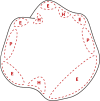


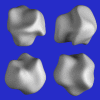
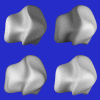
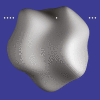







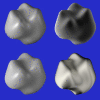





Similar articles
-
Perceptual biases in the interpretation of 3D shape from shading.Vision Res. 2004;44(18):2135-45. doi: 10.1016/j.visres.2004.03.024. Vision Res. 2004. PMID: 15183680
-
The darker-is-deeper heuristic for the perception of 3D shape from shading: Is it perceptually or ecologically valid?J Vis. 2015;15(15):2. doi: 10.1167/15.15.2. J Vis. 2015. PMID: 26562310
-
Lightness perception for matte and glossy complex shapes.Vision Res. 2017 Feb;131:82-95. doi: 10.1016/j.visres.2016.12.004. Epub 2017 Jan 13. Vision Res. 2017. PMID: 28025053
-
Interactions between luminance and color signals: effects on shape.J Vis. 2013 Apr 18;13(5):16. doi: 10.1167/13.5.16. J Vis. 2013. PMID: 23599420 Review.
-
Interactions Between 3D Surface Shape and Material Perception.Annu Rev Vis Sci. 2024 Sep;10(1):69-89. doi: 10.1146/annurev-vision-102122-094213. Epub 2024 Sep 2. Annu Rev Vis Sci. 2024. PMID: 38848608 Review.
Cited by
-
A tutorial on the physics of light and image shading.Iperception. 2024 Sep 30;15(5):20416695241279929. doi: 10.1177/20416695241279929. eCollection 2024 Sep-Oct. Iperception. 2024. PMID: 39421800 Free PMC article.
-
Orientation fields predict human perception of 3D shape from shading.Proc Natl Acad Sci U S A. 2025 Jul 15;122(28):e2503088122. doi: 10.1073/pnas.2503088122. Epub 2025 Jul 10. Proc Natl Acad Sci U S A. 2025. PMID: 40638088 Free PMC article.
-
Qualitative shape from shading.Iperception. 2025 May 30;16(3):20416695251338721. doi: 10.1177/20416695251338721. eCollection 2025 May-Jun. Iperception. 2025. PMID: 40453551 Free PMC article.
References
-
- Anderson, B. L., & Marlow, P. J. (2022). Perceiving the shape and material properties of 3D surfaces. Trends in Cognitive Science, 27, 98–110. - PubMed
-
- Belhumeur, P. N., Kriegman, D. J., & Yuille, A. L. (1999). The bas-relief ambiguity. International Journal of Computer Vision, 35(1), 33–44.
-
- Caniard, F., & Fleming, R. (2007). Distortion in 3D shape estimation with changes in illumination. Proceedings of the 4th Symposium on Applied Perception in Graphics and Visualization, 253, 99–105.
-
- Christou, C. G., & Koenderink, J. J. (1997). Light source dependence in shape from shading. Vision Research, 37(11), 1441–1449. - PubMed
-
- Curran, W. & Johnston, I. A. (1996). The effect of illuminant position on perceived curvature. Vision Research, 36(10), 1399–1410. - PubMed
Publication types
MeSH terms
LinkOut - more resources
Full Text Sources

